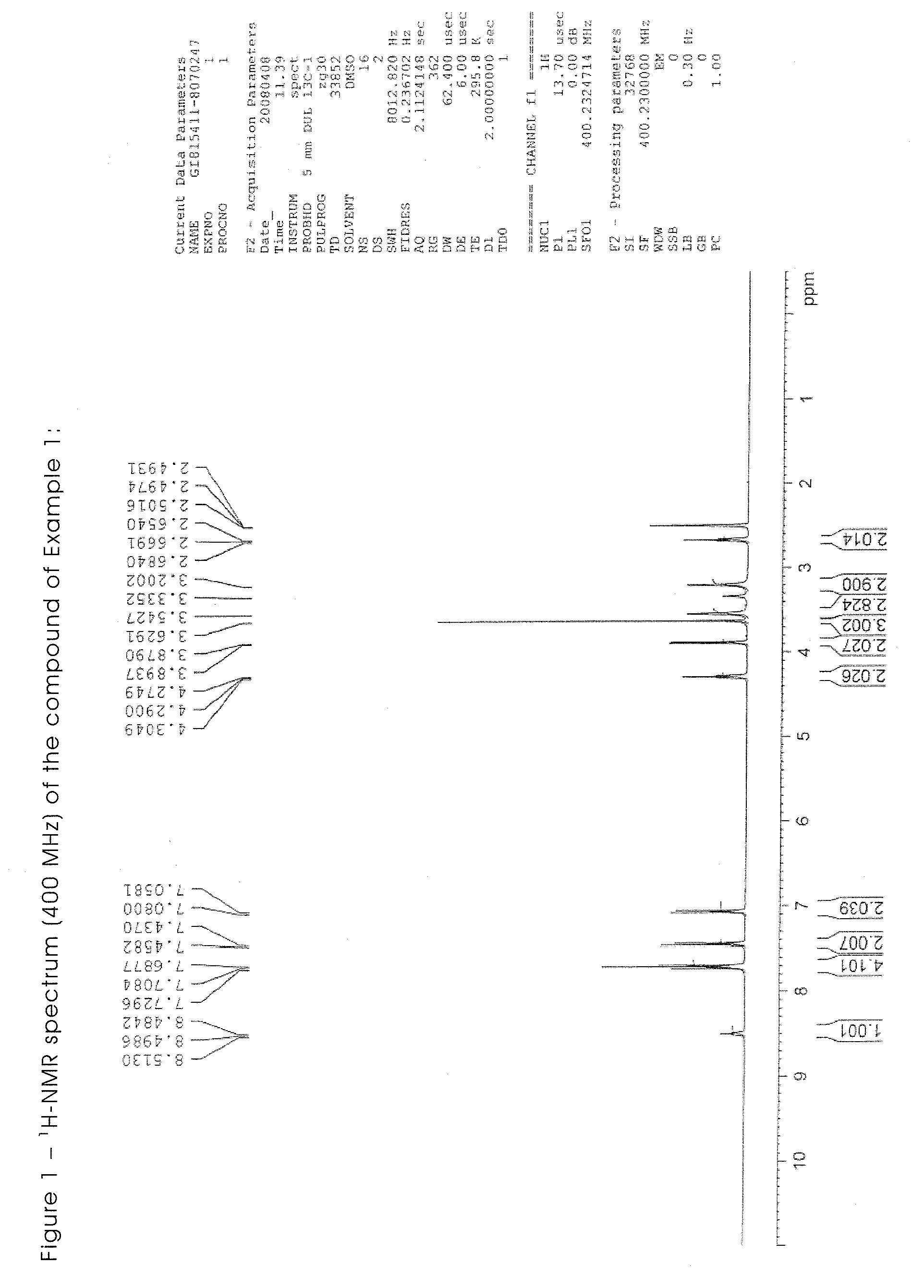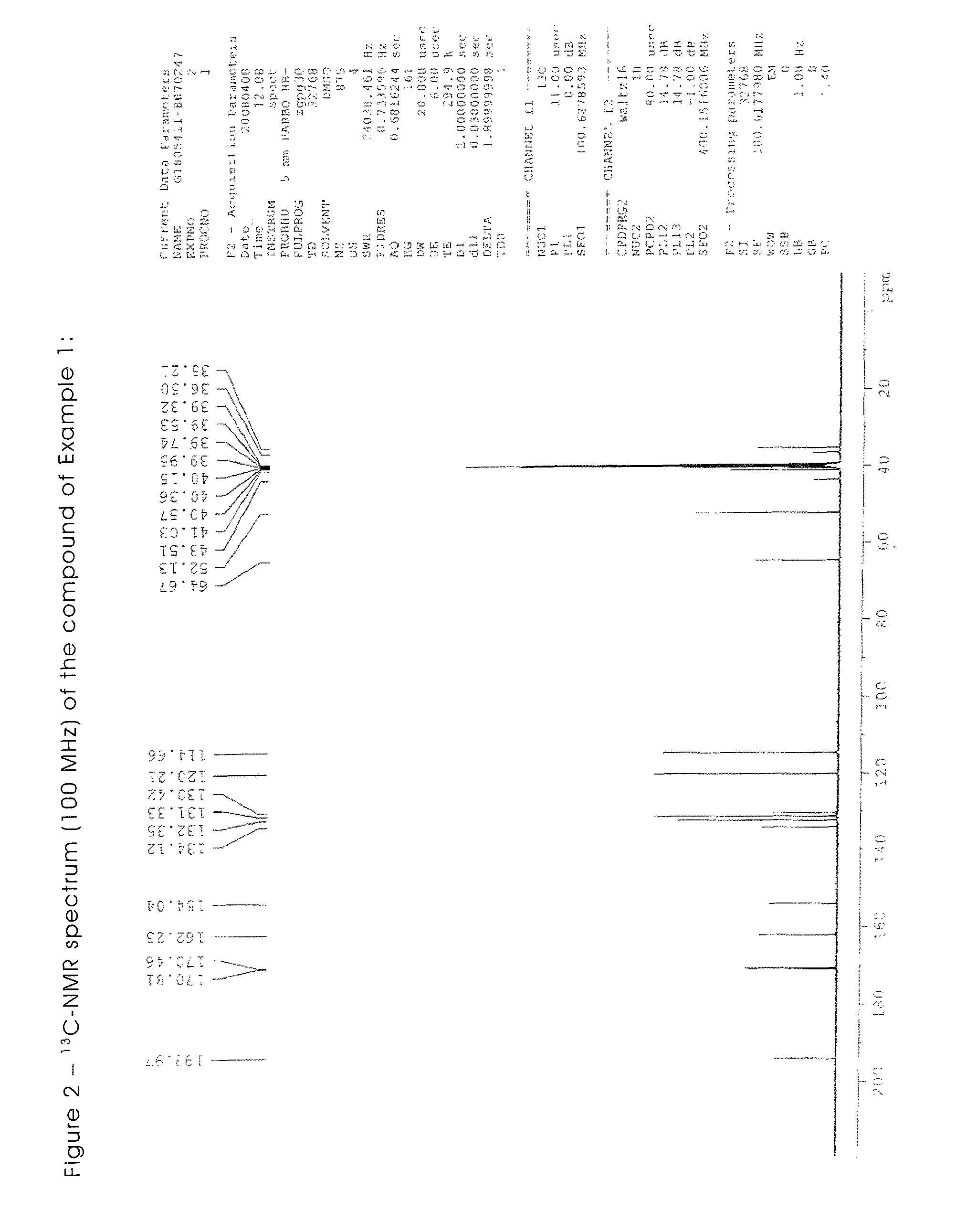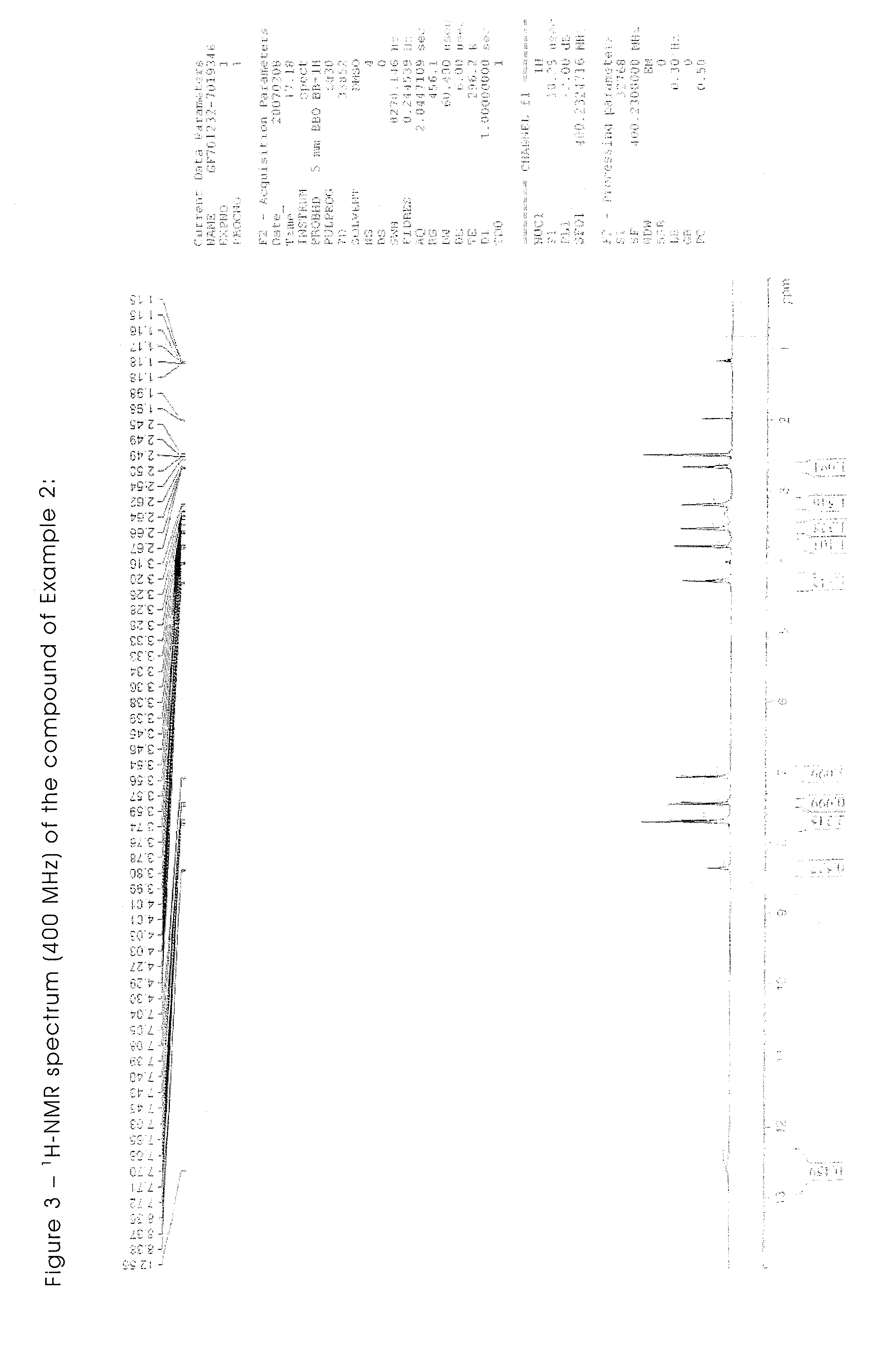Triazene compounds for the treatment of cancer
a triazene compound and cancer technology, applied in the field of new triazene compounds, can solve the problems of unstable compounds, spontaneous decomposition, and never being widely used in the field of cancer treatment, and achieve the effects of reducing the risk of cancer, and reducing the survival rate of cancer patients
- Summary
- Abstract
- Description
- Claims
- Application Information
AI Technical Summary
Benefits of technology
Problems solved by technology
Method used
Image
Examples
examples
Starting Preparations
preparation 1
[0299]The preparation of the starting compound
[0300]
is carried out according to the following reaction scheme:
[0301]
[0302]All the starting materials are well known and documented. The NMR spectra of all the synthesised products are in agreement with the structure.
Stage I
[0303]
[0304]MW: 301: C15H11NO6
[0305]0.5 mol
[0306]102 g of p-nitrobenzoyl chloride (0.55 mol) dissolved in 300 ml of dichloroethane are slowly added dropwise at 0°-5° C., with stirring, to a suspension of 235 g of AlCl3 in 1 litre of dichloroethane. 76 g of phenoxyacetic acid are introduced in portions into the solution at 5° C. Stirring is then carried out for 4 hours at 10° C. and for 10 hours at room temperature.
Working Up:
[0307]600 ml of dichloroethane are distilled off, and 600 ml of ligroin are added. The mixture is then poured onto 2 litres of ice / water. The aqueous phase is separated off and the resulting crystalline product is filtered off with suction, washed with water and dried.
[0308]Yield: 100 g; m.p.: 18...
preparation 2
[0323]The preparation of the phenoxypropionyl starting compound
[0324]
is carried out as shown in the scheme in the description.
Step 1:
[0325]The following materials were used in the indicated amounts:
[0326]
MolecularAmountweightMolEq.Phenol1kg94.1110.621Ethyl acrylate2.7kg100272.54Triton B1mlNaOH (10%)3l407.50.705Ethyl acetate5lConc. HCl3.5l
Phenol and ethyl acrylate were introduced into a 5-litre three-necked glass flask equipped with a thermal element and an overhead stirrer. Triton B was added, and heating was carried out for 48 hours under reflux (120° C.). TLC showed that a small amount of phenol was still present. The reaction composition was worked up as follows. Ethyl acrylate was removed, and the residue was dissolved in ethyl acetate, washed with aqueous NaOH (10%) followed by water (3.0 litres) and dried over anhydrous sodium sulfate. The dried organic layer was concentrated to give a residue. The residue was placed in a 10.0-litre round-bottomed glass flask, concentrated HCl...
PUM
| Property | Measurement | Unit |
|---|---|---|
| solubility | aaaaa | aaaaa |
| solubility | aaaaa | aaaaa |
| temperature | aaaaa | aaaaa |
Abstract
Description
Claims
Application Information
 Login to View More
Login to View More - R&D
- Intellectual Property
- Life Sciences
- Materials
- Tech Scout
- Unparalleled Data Quality
- Higher Quality Content
- 60% Fewer Hallucinations
Browse by: Latest US Patents, China's latest patents, Technical Efficacy Thesaurus, Application Domain, Technology Topic, Popular Technical Reports.
© 2025 PatSnap. All rights reserved.Legal|Privacy policy|Modern Slavery Act Transparency Statement|Sitemap|About US| Contact US: help@patsnap.com



